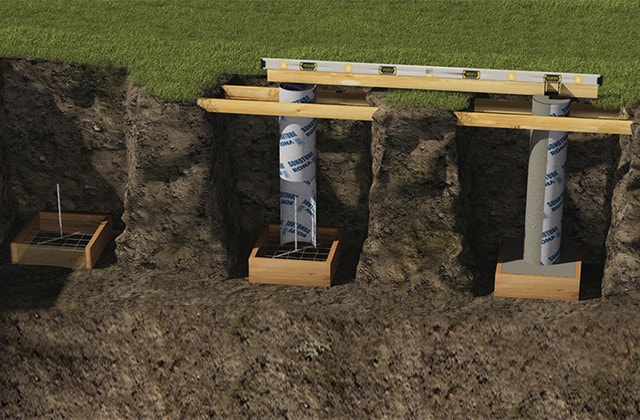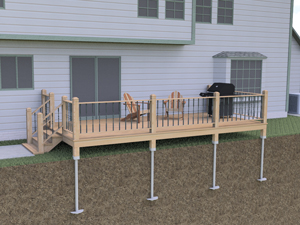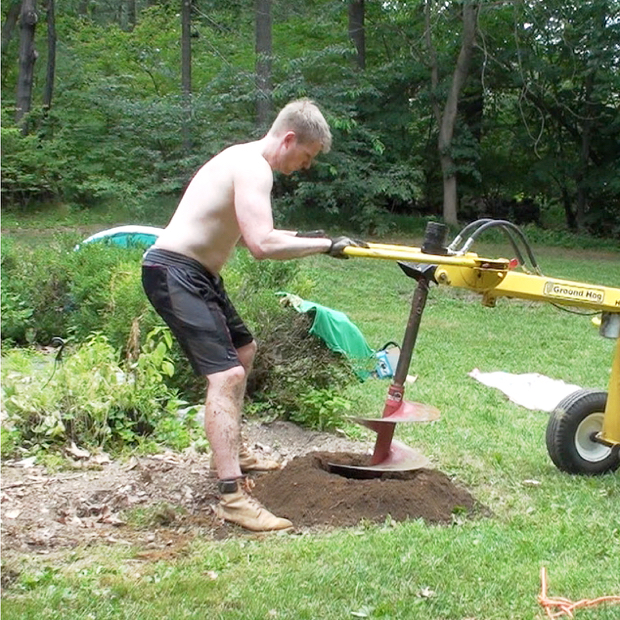Safeguard Foundations, Long-term Perceptions: Mastering the Art of Deck Footings Installation
Safeguard Foundations, Long-term Perceptions: Mastering the Art of Deck Footings Installation
Blog Article
Expert Tips for Setting Up Deck Footings to Support Your Outdoor Room
When it concerns developing a deck, among one of the most essential aspects to think about is the installation of correct grounds. These footings are the foundation whereupon your exterior space will certainly rest, giving stability and assistance for several years to come. However just what does it require to install deck footings appropriately? In this discussion, we will certainly explore experienced pointers and strategies that can aid ensure a effective and resilient deck setup. From picking the ideal sort of footings to avoiding usual mistakes, we will give you with the understanding and insights you need to confidently start your deck-building trip. Allow's dive right in and find the trick to a solid and long-lasting outdoor area.
Relevance of Correct Deck Grounds
Appropriate deck footings are important for making sure the stability and durability of your exterior room. Without strong and effectively mounted grounds, your deck may come to be unpredictable, leading to safety and security threats and costly fixings.

Along with security, correct deck footings likewise add to the long life of your outside area (Deck Footings). Footings that are created and built to hold up against the aspects and soil problems in your location will certainly aid protect against the deck from settling or changing in time. By making certain the grounds are properly sized and mounted, you can lessen the danger of damages to the deck framework, expanding its life expectancy and decreasing the demand for costly repair services or substitutes

Choosing the Right Type of Grounds
When choosing the ideal sort of grounds for your deck, it is very important to think about aspects such as dirt problems, local building regulations, and the total layout of your exterior room. The kind of footing you select will certainly play an important role in guaranteeing the stability and longevity of your deck.
One typical sort of footing is the concrete ground. Concrete footings appropriate for the majority of dirt conditions and provide superb support for decks. They are typically mounted listed below the frost line to avoid changing and clearing up due to freezing and thawing cycles. An additional choice is helical piers, which are excellent for areas with unpredictable soil or high water tables. These piers are screwed into the ground and give solid assistance for the deck.
In many cases, you might require to make use of specific footings, such as stack grounds or deep foundations, if you are constructing a huge or multi-level deck. These grounds are made to distribute the weight of the deck over a bigger area, making sure stability and avoiding sinking or settling.
Prior to picking a sort of ground, it is necessary to get in touch with neighborhood building ordinance and laws to guarantee conformity. Furthermore, think about the style and meant use of your outside space. Elements such as the dimension, shape, and load-bearing demands of your deck will certainly affect the type of footing that is most ideal.
Preparing the Ground for Footing Setup
To correctly prepare click for source the ground for footing setup, it is vital to examine the soil problems and take necessary steps to ensure stability and toughness of the deck. The initial action is to dig deep into the area where the footings will be installed.
When the area has been dug deep into, the next step is to small the soil. This can be done using a plate compactor or by utilizing a hand tamper. Compacting the dirt assists to remove any type of voids or air pockets, which can lead to resolving and instability with time.
After compacting the soil, it is necessary to lay a layer of crushed rock or crushed rock at the end of the excavation. This will certainly offer drainage and help to stop water from merging around the footings, which can result in disintegration and instability.
Step-by-Step Guide to Setting Up Deck Footings
After properly preparing the ground for footing installation, the following step is to start the procedure of setting up deck grounds. This step-by-step overview will supply you with a clear understanding of how to set up deck footings for your outdoor room.
Figure out the place: Beginning by marking the placements of the deck grounds using risks and string. Guarantee that the places straighten with the style and format of your deck.
Dig the openings: Make use of a blog post opening digger or an auger to dig the holes for the grounds. The depth and size of the holes ought to be in accordance with neighborhood building codes and the certain needs of your deck design.
Level the openings: Make use of a degree to make sure that the openings are dug to the correct depth and are level with each various other. (Deck Footings)
Include gravel: Location a layer of crushed rock at the base of each hole to improve drainage and avoid the wood from decaying.
Place the footings: Place the grounds right into the holes, making certain they have a peek at this website are degree and plumb. Use a level and a gauging tape to ensure precision.
Protect the footings: Put concrete right into the holes around the grounds, filling them to the top. Make use of an article level to ensure the footings stay degree as the concrete collections.
Enable time for healing: Allow the concrete remedy according to the producer's guidelines prior to waging the deck building and construction.
Usual Blunders to Prevent During Footing Installation
One vital element to take into consideration during the installment of deck footings is staying clear of usual blunders that can endanger the stability and durability of your exterior space. While deck grounds may look like a simple and easy part of the building procedure, neglecting particular elements can bring about pricey repair services and possible safety and security risks down the line.

Furthermore, ignoring to mount appropriate water drainage procedures can trigger water to build up around the footings, leading to rot, degeneration, and the ultimate weakening of the deck's structure. Furthermore, making use of the wrong type of footing material or stopping working to adequately secure the grounds can endanger their architectural honesty.
To avoid these mistakes, it is important to speak with an expert or comply with industry standards to make sure appropriate ground installation. By doing so, you can make sure the security and durability of your outdoor area, providing a secure and enjoyable setting for many years to come.
Verdict
Finally, mounting appropriate deck footings is vital for the stability and durability of your outside room. By picking the right sort of footings and sufficiently preparing the ground, you can ensure a strong foundation for your deck. Adhering to a step-by-step guide and avoiding typical blunders throughout footing installment will better enhance the longevity and safety and security of your deck.
Appropriate deck grounds are necessary for making sure the stability and long life of your exterior area. The footings serve as a connection in between the ground and the deck, allowing the weight of the deck and its occupants to be spread equally right into the soil.One usual type of ground is the concrete footing. Insert the footings: Put the footings into the openings, making sure they are level and plumb. Secure the footings: Put concrete into the holes around the footings, filling them to the top.
Report this page